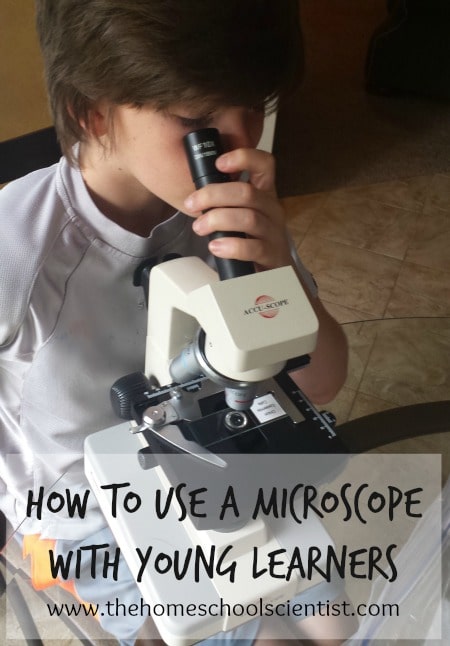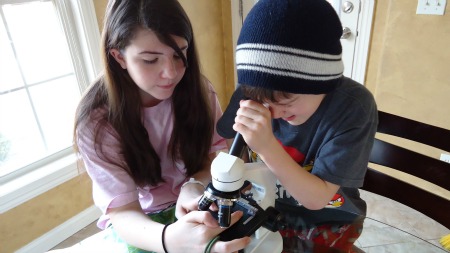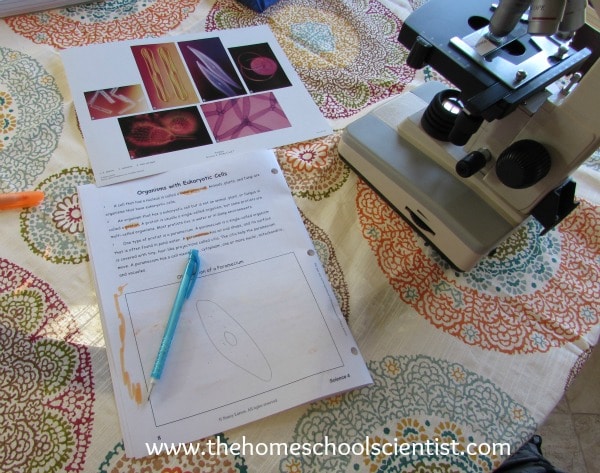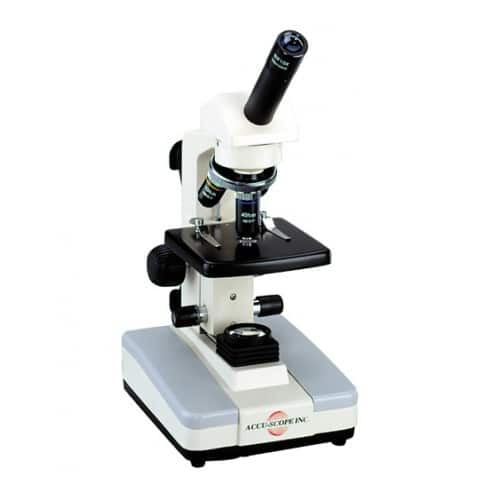How To Use A Microscope With Young Learners

*This post contains affiliate links.
One of the most fun things to do when studying science is to view things under a microscope. Seeing things at that level changes the way we look at and think about the world around us. We just need to learn how to use a microscope.
Kids of all ages love looking through microscopes. Although, most of the time microscopes are saved for the big kids. Microscopes are many times thought to be too complicated and too expensive for the little ones. Some have suggested that seeing things at such a minute level is just too much for young learners to comprehend. I disagree.

My children have been using microscopes since they were pre-schoolers. I closely supervised them and taught them the proper way to use a microscope from the beginning. Now, they are 10 and 14 and very comfortable using a microscope.
Here are some tips for introducing microscopes and the proper way to use them with your young ones.
Making Microscopes Easy For Young Learners
Start out with at good quality microscope. We’ve all been tempted to get those cheap little microscopes that promise to be perfect for young students. My thought on that is instead of spending money on an inferior microscope with very limited magnification range, invest in a quality microscope that will last throughout their educational journey. You’ll actually save money and frustration.

My 10 year old is using our family microscope with his science curriculum. He is comfortable using the microscope, because he’s been using it for years.

Currently, we are using the Accu-Scope 3088 LED from MicroscopeCentral.com. This is the perfect homeschool microscope. You can read all about it in my post Why Microscopes Make Perfect Christmas Gifts.
Learn how to use the microscope yourself. Modeling the proper way to do anything with kids has a big impact. Young ones tend to mimic the behavior and actions they see in others. Demonstrate the proper way to use the microscopes and expect them to do the same.
Teach that the microscope is a tool not a toy. Teaching children how to use the microscope is important, teaching them why we use it carefully is just as important.
Start with prepared slides. Sure, gathering pond water or cheek cell samples on your own is fun, but it can be a bit tedious for young learners who just want to look under the microscope. There are lots of commercially prepared slides available that have wonderful specimens that have been fixed and stained properly so you have the best viewing possible. This set is perfect to start with. It has a wide variety of slides at a great price.
Most curriculum that have a cell or microscope study come with prepared slides. Nancy Larson Science 4 comes with nice small set of prepared slides.
Invest in a microscope camera. No matter how well you teach and prepare your child to use the microscope, sometimes they just aren’t able to maneuver the slide and the focus knobs to just the right point to see what is on the microscope slide. That’s when microscope camera’s come in handy.
This one we use is the AccuCam 3.0 M.P. eyepiece camera from MicroscopeCentral. It fits perfect with our Accu-Scope 3088 microscope. The software that comes with it is easy to use. It allows us to not only see what is on the slide on our computer screen, but to take a screen shot and make enhancements to the image.

These are photos of some of the prepared slides that come with Nancy Larson Science 4 taken with the AccuCam 3.0.
Homeschool Microscope Recommendations
For the general features I look for in a good homeschool microscope, check out this post – Choosing A Homeschool Science Microscope.
For more details on the microscope and camera I used in this post, check out Why Microscopes Make Perfect Christmas Gifts.
For ideas on what to look at with a microscope, check out this link – 15 Things You Should Look At Under A Microscope.


